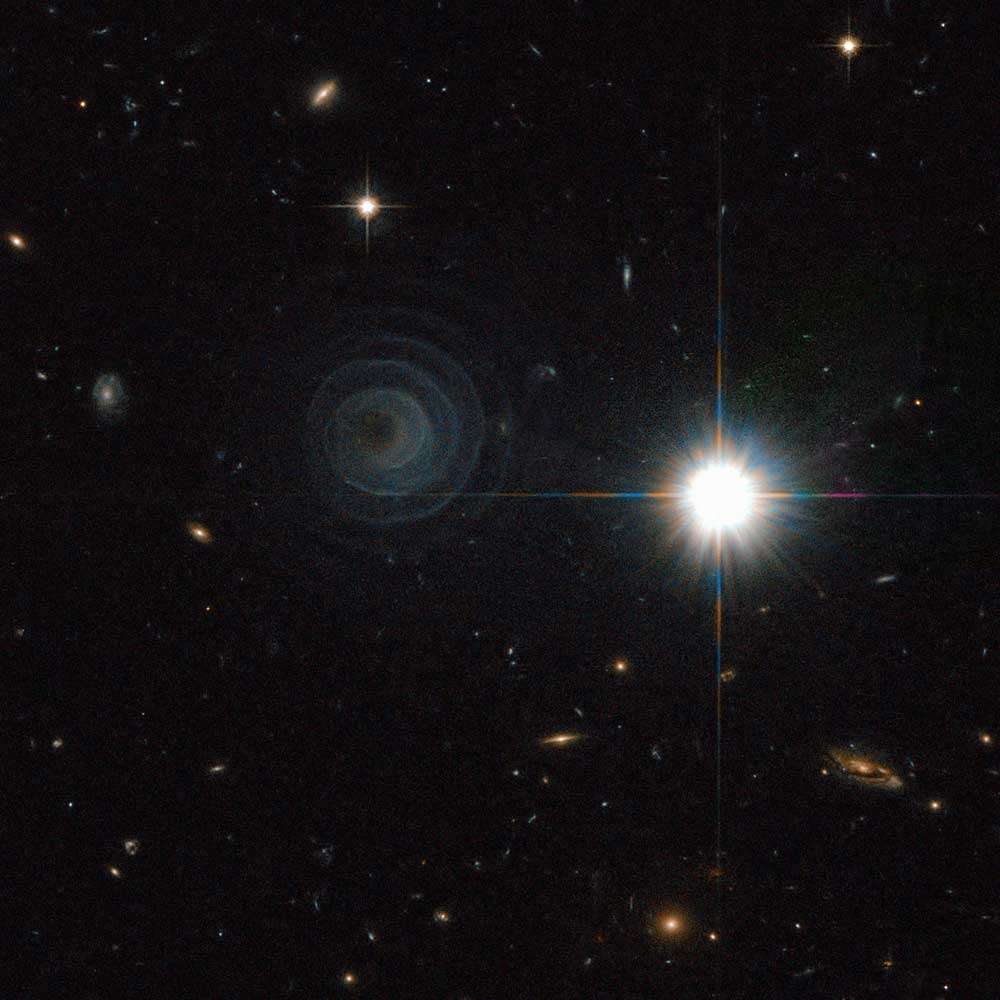Weird Celestial Spiral Photo Explained

A photograph of a weirdcosmic spiral in deep space taken by the Hubble Space Telescope is no trick of light ? it's astrophysics in action,scientists say.
The cosmic pinwheel snapshot released this week by theHubble science team shows "one of the most perfect geometrical formscreated in space," Hubble scientists said in a statement. [Hubble'samazing celestial spiral photo.]
The photo shows an unusual pre-planetary nebula calledIRAS 23166+1655 as it is forming around the dust-shrouded star LL Pegasi in theconstellation Pegasus.
Despite their name, planetarynebulas have nothing to do with planets. The objects earned their namebecause they appear as small diffuse disks instead of individual stars.
What makes the Hubble photo stand out is its odd, butthin, spiral pattern winding around the star with unexpected regularity,researchers said. The pattern, which suggests a specific origin for the nebula,is composed of dust and gas streaking outwards at speeds of just over 31,000mph (50,000 kph). The time it takes to create each shell in the spiral is about800 years, astronomers say.
The HubbleSpace Telescope observed the cosmic spiral formation several years ago. TheEuropean Space Agency posted the snapshot to its Hubble telescope websiteMonday as the picture of the week.
Astronomers think the spiral formed because of the binarynature of LL Pegasi. The star is actually part of a double-starsystem and is losing material to its nearby stellar companion, whichappears to have an orbital period of 800 years ? the same amount of time ittakes to create each of the spiral's shells, they said.
Get the Space.com Newsletter
Breaking space news, the latest updates on rocket launches, skywatching events and more!
Planetary nebulas are created by stars ranging betweenhalf the mass of our sun up to eight solar masses. These stars do not end theirlives in a supernova explosion. Instead, they gradually shed their outer layersof gas over time to create striking structures in space, researchers said.
The star IRAS 23166+1655 is "just starting thisprocess and the central star has yet to emerge from the cocoon of envelopingdust," they added.
The Hubble Space Telescope is a prolific orbitingobservatory that has spent more than 20 years peering deep into the cosmos.
NASA and the European Space Agency have invested some $10billion into the long-lived space telescope, which was launched in April 1990.Astronauts last overhauled the aging telescope in May 2009, to extend theiconic observatory's life by up to 10 years.
- Photos: Spectacular Nebulas in Deep Space
- The Strangest Things in Space
- Images - 20 Years of the Hubble Space Telescope
Join our Space Forums to keep talking space on the latest missions, night sky and more! And if you have a news tip, correction or comment, let us know at: community@space.com.

Tariq is the Editor-in-Chief of Space.com and joined the team in 2001, first as an intern and staff writer, and later as an editor. He covers human spaceflight, exploration and space science, as well as skywatching and entertainment. He became Space.com's Managing Editor in 2009 and Editor-in-Chief in 2019. Before joining Space.com, Tariq was a staff reporter for The Los Angeles Times covering education and city beats in La Habra, Fullerton and Huntington Beach. In October 2022, Tariq received the Harry Kolcum Award for excellence in space reporting from the National Space Club Florida Committee. He is also an Eagle Scout (yes, he has the Space Exploration merit badge) and went to Space Camp four times as a kid and a fifth time as an adult. He has journalism degrees from the University of Southern California and New York University. You can find Tariq at Space.com and as the co-host to the This Week In Space podcast with space historian Rod Pyle on the TWiT network. To see his latest project, you can follow Tariq on Twitter @tariqjmalik.









